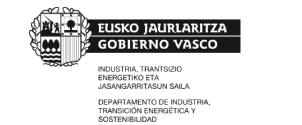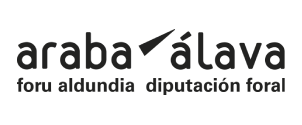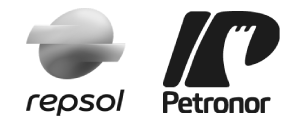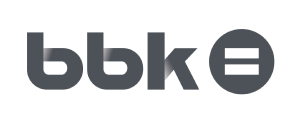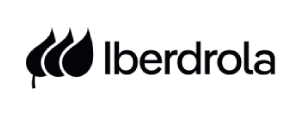When we came out with our first research results on International Niche Market Leaders (“Líderes en Nichos de Mercados Internacionales”) and reported that we had established an initial number of 30 cases in the Basque Country, this notice was received with a mix of satisfaction and skepticism among readers.
On the side of the enthusiasts, there was delight that our research provided further insights into the factors and actors that invigorate (parts of) the industrial economy in the Basque Country. I.e., by confirming the existence of a range of individual companies that are leaders in the particular markets they address.
On the side of skeptics, there were reactions like:
“We didn’t even know that this species of International Niche Market Leaders existed, and now you are telling us we have 30 among us!”
and
“If a German publication indicates that there are eleven hidden champions (“campeones ocultos”) in Spain and you find 30 International Niche Market Leaders in Euskadi; someone has been counting incorrectly. And since the seminal work in this research field is foreign; the homegrown analysis must be wrong.”
While we enjoyed the positive reactions, of course, it is precisely the critical voices that allow one to express and explain things in a better way. So here we go:
To a certain extent, companies are like books: they all have their own stories, they can address highly different target audiences (while middle-of-the-road performers compete for the mainstream public, niche players go after customers with more “chequered” demand profiles), and not all of them be bestsellers (in fact: some may not even aspire to become one).
Consequently, for books and companies it goes that -as for any other product-market combination- there are more niche items than there is hit material out there. Still, the ones we all know are the producers of hits and the bestseller products (like: The Da Vinci Code by Dan Brown or Harry Potter by J.K. Rowling), whereas the ones we know a lot less are the indie and alternative goods and the manufacturers behind them (you can come up with your own favorite examples). Nevertheless, the sum of the latter forms the (silent and not so visible) majority.
A similar parallel can be drawn with the world of animals: while we all recognize a giraffe or a bear when we see one (compare with a blockbuster company, like: Telefonica or Philips), the sum of species is foremostly made up of less-known animals and creatures that are (vastly) smaller in size than the well-known top-of-the-food-pyramid mammals. In a similar vein, companies that act as niche players are also more common, yet less mediagenic and less eye-catching than the corporate giants we know from rankings such as Fortune’s 500.
And guess what: among all the below-the-water-level markets and sub-segments in which niche players operate, a primus inter pares or a “trio supremo inter pares” can be found.
The former implies that looking for International Niche Market Leaders (INMLs) is very much a long tail story. And to unravel that storyline, you need to be down on the ground with them; in their habitat; to examine their modus operandi. We have done precisely that to gather the necessary intelligence and be certain that our tracking-and-tracing methods would lead to meaningful results. Conversely, it is not something that can merely be achieved from a distance; via remote sensing, tele lens observations or secondary research.
How then does our contemporary outcome of 30 INMLs in the Basque Country relate to findings elsewhere? A first remark that must be made is that comparisons should be drawn up with equals. This means we should look at NUTS2 regions, in the first place, and, in addition, to regions that have preserved and upgraded their manufacturing backbone to a similar extent as Euskadi has done.
Against this backdrop, we observe that the Basque ‘INML-density’ reaches a “score” of 14 INMLs/million inhabitants. Meanwhile, calculations with regard to industrial NUTS2 regions from German-speaking parts of Europe have led to scores of up to 30 hidden champions/million inhabitants.
On the one hand, this manifests that the Basque numbers may in fact be moderate. On the other hand, while the ‘14:30 contrast’ stems from benchmarking the Basque score against those of somehow comparable regions, the methods that were used for the INML inventories across these regions have not been totally identical (more on this in a next post).
And from an intra-Spanish perspective, does the sum of 30 INMLs set Euskadi apart as a hotspot for International Niche Market Leaders? Our preliminary answer to this question would be: “Yes, that is probably the case.” We can support this statement based on first outcomes from a screening exercise we conducted to identify likely INML instances across Spain; an exercise for which we applied the same methods as the ones that we used to find initial traces of INMLs in the Basque Country.
On that basis we identified a handful of cases in Navarra, a group of around ten for Aragon, and a couple of dozens of cases in the stretch between the French-Catalan border and Murcia, with several further cases scattered across the country in the Huelva-La Coruña-Santander-Almeria quadrant.
To a certain extent the density of INMLs/population reflects the portion of territorial GDP that stems from sovereign industrial activity and the international footprint of companies in a locality, and our findings till date thus exhale the idiosyncrasies of the Spanish comunidades autónomas in that regard.
To be continued.
Más artículos de este autor
-
2025-01-29
Inversión en I+D y solicitudes de patente en el País Vasco: una historia de unos pocos escapados con el pelotón a varios minutos -
2024-11-14
Dos ángulos “muertos” que condicionarán el éxito de las medidas del Informe Draghi -
2024-09-08
Servitización, el palabro que explica cómo la industria gana competitividad con los servicios -
2024-02-29
La digitalización y la servitización: una combinación no tan evidente -
2023-09-18
Estilo anglosajón o escandinavo: ¿cómo se relacionan las empresas industriales con sus proveedores de servicios? -
2020-11-06
Respuestas a la crisis de la COVID-19: diferencias entre España, Austria y Alemania según el modelo de Hofstede -
2020-06-22
Challenges for supply chain management in times of (post-)COVID19 -
2020-04-27
Will the corona-crisis lead to a turnaround in supply chain management? -
2019-09-23
¿Dónde se “esconden” nuestros campeones ocultos? -
2018-11-22
¿Producto o servicio? ¿Cual será el centro del sistema de negocio industrial? -
2017-11-21
Campeones cotizados -
2017-05-10
Euskadi Inside -
2017-02-06
How to grow and exploit a niche market? -
2016-11-16
How to create a (niche) market from scratch? -
2016-06-01
How to recognize an International Niche Market Leader? -
2016-02-17
What kind of companies do we refer to when we speak of International Niche Market Leaders? (Part 2) -
2016-02-11
What kind of companies do we refer to when we speak of International Niche Market Leaders? (Part 1) -
2014-07-01
Live and direct from Lazkao to the world -
2014-01-27
¿Necesita Mondragón un Marchionne o un Semler? -
2013-10-30
El valor de Fagor Electrodomésticos visto desde una perspectiva del clúster gastronómico vasco -
2013-10-16
Christine Lagarde y Olli Rehn se van de compras en Eroski -
2013-06-10
La internacionalización de la empresa vasca: ¿Cómo sacar una cola larga de una puerta giratoria? -
2013-03-12
¿Cómo revitalizar las actividades manufactureras? -
2013-03-07
Spain’s last economic stronghold struggles to maintain resilience -
2013-02-04
The competitive advantages of emerging economies: from cheap labour over sophistication of demand to innovation incubation -
2012-06-21
Del “backshoring” a la “internacionalización inversa”: ¿Debe el País Vasco tomarse más en serio la atracción de inversiones chinas?




